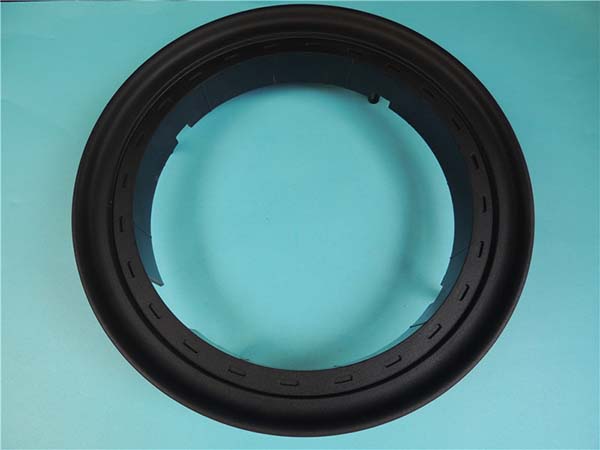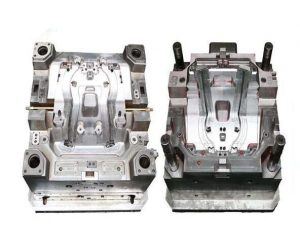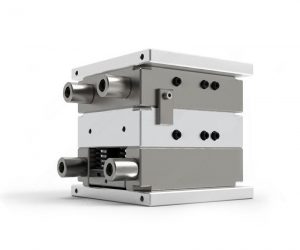1. Introduction: The Paradigm Shift in Manufacturing
In the dynamic landscape of modern production, Additives Verfahren (AM), commonly known as 3D printing, has emerged as a revolutionary force, particularly in the realm of rapid prototyping. This technology represents a significant departure from traditional manufacturing paradigms, ushering in a new era of efficiency, customization, and innovation.
AM is a process that builds three - dimensional objects layer by layer from a digital model. This is in stark contrast to traditional subtractive manufacturing methods, which start with a block of material and remove excess to create the desired shape. For example, in a traditional machining process for creating a metal part, large amounts of metal are cut away, resulting in substantial material waste. In AM, the material is added precisely where it is needed, reducing waste by up to 90% in some cases.
The impact of AM on rapid prototyping is profound. It enables the creation of complex geometries that were previously difficult or impossible to achieve with traditional methods. Consider a prototype for a new aerospace component. Traditional manufacturing might struggle to create internal cooling channels with intricate shapes. However, with AM, these complex channels can be printed directly, improving the component's performance and reducing its weight.
The speed at which AM can produce prototypes is another game - changer. Design iterations, which could take weeks or even months in traditional manufacturing, can now be completed in a matter of days or even hours. This acceleration in the design - to - prototype cycle has a domino effect on product development. Companies can test more design concepts in a shorter time frame, leading to better - optimized products.
The following Yigu Technology table summarizes the key differences between traditional subtractive manufacturing and Additive Manufacturing in the context of rapid prototyping:
| Aspect | Traditional Subtractive Manufacturing | Additives Verfahren |
| Material Usage | High waste, typically 50 - 90% material removal | Low waste, material added only where needed, up to 90% waste reduction in some cases |
| Complexity of Geometries | Limited ability to create highly complex internal structures | Capable of creating intricate internal and external geometries |
| Design Iteration Time | Weeks to months for each iteration | Days or hours for each iteration |
| Cost for Small - Batch Production | High due to tooling and setup costs | Lower as there is no need for extensive tooling |
This shift from traditional to Yigu Technology additive manufacturing in rapid prototyping is not just a technological upgrade; it is a fundamental change in how products are designed, developed, and brought to market. In the subsequent sections, we will delve deeper into the specific ways AM powers rapid prototyping, the materials and technologies involved, and its real - world applications.
2. Technical Foundations of Additive Manufacturing
2.1 Core Processes for Rapid Prototyping
Additive Manufacturing encompasses a variety of techniques, each with its own set of advantages and ideal applications in rapid prototyping.
Selective Laser Sintering (SLS)
SLS is a more advanced and precise AM process. It uses a high - power laser to sinter powdered materials, usually polymers like nylon, into a solid object. In an SLS machine, a bed of powder is first laid down evenly. The laser then scans the surface of the powder bed, selectively melting and fusing the powder particles together according to the cross - sectional shape of the 3D model. Once a layer is completed, the build platform is lowered, a new layer of powder is spread, and the process repeats.
The precision of SLS is remarkable, with an accuracy of around ±0.1mm. This makes it suitable for creating durable and functional parts. For instance, in the automotive industry, SLS can be used to produce prototype engine components that need to withstand high - stress conditions during testing. The process also has the advantage of not requiring support structures in most cases, as the unsintered powder supports the overhanging parts during printing. However, SLS machines are more expensive, often costing tens of thousands of dollars, and the powder materials can also be relatively costly.
Stereolithography (SLA)
SLA is another high - precision AM technology, known for its ability to create prototypes with smooth surfaces. It works by using a UV laser to cure a photosensitive resin layer by layer. In an SLA setup, a vat is filled with liquid resin. A movable platform is initially positioned just below the surface of the resin. The UV laser traces the cross - section of the first layer of the 3D model onto the resin surface, causing the resin to polymerize and solidify. After the first layer is complete, the platform is lowered slightly, and a new layer of resin is spread over the previously cured layer. The laser then cures the next layer, and the process continues until the entire object is formed.
SLA is highly valued in industries such as jewelry design and dental applications. In jewelry design, SLA can produce intricate and detailed wax - like prototypes that can be used for casting precious metals. In dentistry, it can create accurate models of teeth for orthodontic appliance design. The surface finish of SLA - printed parts is much smoother compared to FDM, and the precision can be as high as ±0.05mm. However, SLA resins can be sensitive to light and environmental conditions, and post - processing, such as cleaning and curing the part further, is often required.
The following Yigu Technology table summarizes the key characteristics of these three core AM processes for rapid prototyping:
| Process | Material | Precision | Oberflächenausführung | Cost of Equipment | Support Structure Requirement |
| FDM | Thermoplastics (PLA, ABS) | ±0.2 - 0.5mm | Rough, visible layer lines | Low (hundreds of dollars for desktop models) | Usually required for overhanging parts |
| SLS | Polymer powders (e.g., nylon) | ±0.1mm | Moderate | High (tens of thousands of dollars) | Generally not required |
| SLA | UV - cured resins | ±0.05mm | Smooth | Medium - high (thousands of dollars) | Required for overhanging parts |
2.2 Material Advancements
The development of materials for Additive Manufacturing has been a crucial factor in its growing capabilities. Modern AM materials span a wide range, from polymers to metals and composites, each tailored to specific applications.
Biocompatible Polymers for Medical Devices
In the medical field, biocompatible polymers are of utmost importance. Materials like Polycaprolactone (PCL), Polylactic - co - glycolic acid (PLGA), and certain types of polyurethanes are used to create 3D - printed medical devices. For Yigu Technology example, PCL is often used to print scaffolds for tissue engineering. These scaffolds provide a structure for cells to attach and grow, helping in the regeneration of damaged tissues. PLGA, on the other hand, is used in drug - delivery systems. Its biodegradable nature allows for the controlled release of drugs over time. These biocompatible polymers are carefully selected to ensure they do not cause an adverse reaction in the human body.
High - Strength Metals for Aerospace
Aerospace applications demand materials with high strength - to - weight ratios. High - strength metals such as Titanium - 6Aluminum - 4Vanadium (Ti - 6Al - 4V) are commonly used in AM for aerospace components. Ti - 6Al - 4V offers excellent corrosion resistance, high strength, and low density, making it ideal for parts like engine components, wing brackets, and landing gear parts. AM allows for the creation of complex geometries in these metal parts, which can improve their performance. For instance, internal lattice structures can be printed into metal components to reduce weight without sacrificing too much strength. GE Aviation's use of AM to produce fuel nozzles is a prime example. By using AM, they were able to reduce the number of parts in the fuel nozzle by 25% and decrease its weight by 40%. This not only improves the fuel efficiency of the engine but also reduces maintenance costs.
Composites for Lightweight Automotive Components
In the automotive industry, composites are being increasingly used in AM to create lightweight components. Composites, which are made up of a combination of materials such as carbon fiber reinforced polymers (CFRP), offer high strength and low weight. For Yigu Technology example, CFRP can be used to print parts like car body panels, spoilers, and interior components. The use of these composite materials in AM can significantly reduce the weight of the vehicle, leading to better fuel efficiency and performance. Additionally, AM allows for the customization of these composite components, enabling car manufacturers to create unique designs for different vehicle models.
As the range of available AM materials continues to expand, so does the potential for creating more innovative, high - performance prototypes across various industries. The ability to match the right material to the right AM process is key to unlocking the full potential of additive manufacturing in rapid prototyping.
4. AM vs. Traditional Manufacturing: A Comparative Analysis
When considering the role of Additive Manufacturing in rapid prototyping, it is essential to compare it with traditional manufacturing methods. This comparison reveals the unique advantages and limitations of each approach, helping businesses make informed decisions about which method to use for their prototyping needs.
4.1 Material Efficiency
One of the most significant differences between AM and traditional manufacturing is material waste. In traditional manufacturing, especially in subtractive processes like machining, a large amount of material is removed to create the desired shape. For Yigu Technology example, in turning a metal block into a complex - shaped part, up to 70% of the original material may be wasted as chips.
In contrast, Additive Manufacturing is a material - efficient process. Since it builds objects layer by layer, material is only added where it is needed. As shown in the table below, AM typically has a material waste of less than 10%. This not only reduces the cost of raw materials but also has environmental benefits, as less material is discarded.
| Parameter | Additives Verfahren | Traditional Manufacturing |
| Material Waste | <10% | 30–70% |
| Prototyping Lead Time | 1–3 days | 5–10 days |
| Design Complexity | Intricate geometries | Limited by tooling |
| Cost for Low Volumes | \(50–\)500 per part | \(200–\)2,000 per part |
4.2 Speed of Prototyping
The time it takes to produce a prototype is a critical factor in product development. Traditional manufacturing processes often involve multiple steps, such as designing and creating molds, setting up machinery, and performing machining operations. These steps can take a significant amount of time. For a simple plastic prototype, traditional injection molding might require 5 - 10 days, including mold design and production.
Additive Manufacturing, on the other hand, can significantly reduce the prototyping lead time. Once the digital model is ready, the 3D printing process can start immediately. In most cases, a prototype can be printed within 1 - 3 days, depending on the complexity of the design and the size of the part. This speed allows companies to iterate on their designs more quickly, getting to market faster with improved products.
4.3 Design Freedom
Design complexity is another area where AM outshines traditional manufacturing. Traditional methods are often limited by the tools and processes used. For example, in traditional die - casting, creating internal cavities or complex undercuts can be extremely difficult or even impossible without using additional and often costly techniques.
AM, however, has no such limitations. It can create parts with intricate geometries, internal lattice structures, and complex shapes that would be challenging or impossible to produce with traditional methods. This design freedom enables engineers to optimize parts for performance, weight, and functionality. For instance, in the design of a heat exchanger, AM can create complex internal channels that maximize heat transfer while minimizing the weight of the component.
4.4 Cost Considerations
Cost is a crucial factor in choosing a manufacturing method for rapid prototyping. For low - volume production, traditional manufacturing can be expensive. The cost of tooling, such as molds for injection molding or dies for stamping, can be high, often ranging from \(200 - \)2,000 per part, even before considering the cost of materials and labor.
Yigu Technology Additive Manufacturing, in contrast, has a lower cost for low - volume production. Since there is no need for extensive tooling, the cost per part is relatively low, typically ranging from \(50 - \)500. This makes AM an attractive option for small - scale prototyping, where the cost of traditional tooling would be prohibitive. However, as the production volume increases, traditional manufacturing methods may become more cost - effective due to economies of scale.
FAQ
Q1: How does additive manufacturing reduce prototyping costs?
A: AM reduces prototyping costs by eliminating the need for expensive tooling and minimizing material waste. In traditional manufacturing, creating molds or dies for prototyping can be costly, especially for low - volume production. With AM, the digital model is directly translated into a physical prototype, reducing the cost of tooling. Additionally, the material - efficient nature of AM means less waste, further cutting down on costs. For example, in low - volume production, AM can reduce costs by up to 70% compared to traditional methods.
Q2: Are additive - manufactured parts as strong and durable as those made by traditional methods?
A: The strength and durability of additive - manufactured parts depend on the material and process used. Many AM materials, such as carbon - fiber composites and high - strength metals like Inconel alloys, can produce parts with strength and durability comparable to or even better than traditional manufacturing. For instance, parts made from these materials in the aerospace industry can withstand high - stress environments. However, it's important to note that the design and post - processing of the AM parts also play a crucial role in their final properties. Some AM processes may require additional heat - treatment or surface - finishing steps to optimize strength and durability.
Q3: In which industries is additive manufacturing in rapid prototyping most beneficial?
A: Additive manufacturing in rapid prototyping is highly beneficial in several industries. In the aerospace industry, it enables the production of lightweight, high - performance components with complex geometries, reducing fuel consumption and improving overall aircraft efficiency. The medical industry benefits from AM's ability to create customized prosthetics, implants, and anatomical models, improving patient care. In the automotive industry, AM helps in quickly prototyping new vehicle parts, accelerating the design - to - market cycle and enabling the production of lightweight, fuel - efficient components. Additionally, industries such as consumer goods, jewelry, and architecture also find value in AM for its design freedom and rapid prototyping capabilities.



